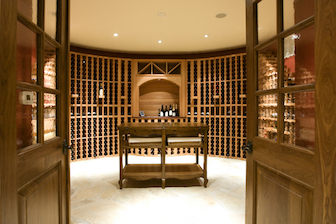
How homeowner’s insurance differs for a luxury property
Buyers who are new to the high-end real estate market are often shocked to find that their old insurance company is unwilling to insure their new home. But while not every provider issues policies for luxury properties, this isn’t necessarily a bad thing.
Luxury homes include specialty features with unique value propositions. It only makes sense that a specialty insurance company is best suited for protecting such a property.
Here are a few things to consider when shopping for luxury homeowner’s insurance.
Putting replacement value on the irreplaceable
Some items, once lost, are gone forever.
In a city as rich with historical architecture as Philadelphia, many older homes feature architectural artifacts that are all but impossible to replace. Given that valuation is often based off replacement cost, it’s easy to see the conundrum.
What is the replacement cost of the irreplaceable? The answer lies in arriving at an agreed upon value in advance.
Insurance providers that offer protection for historic homes will send an appraiser to your property to valuate rare architectural elements such as:
- Original stained-glass windows
- Imported marble, tile or flooring
- Handcrafted woodwork
- Stone carving
- Expensive/unique wall coverings
- Antiques and other high-value personal possessions
Creating a photographic record
The appraisal phase of insuring a luxury property extends beyond setting dollar values and coverage limits. Luxury homeowner’s insurance agents should also create an extensive photographic record of the home.
Detailed notes and imagery will make it possible to best return the home to its original state should disaster strike.
Specialty riders
Whereas a standard homeowner’s policy sets a total claim limit for personal goods, a high-end policy tends to add specific riders to cover high value collections.
Common goods to be named in a rider include:
- Wine collections
- Fine art
- Jewelry
- Antique furnishings
Forget about market value
One of the most glaring differences between standard homeowner’s insurance and a luxury policy is that insured amounts rarely match up with the amount you paid for the home.
In the case of historic homes, the cost of replicating the home from scratch can easily exceed the purchase price of the home. Unless you’d be happy being cut a check and moving elsewhere in the event of a major loss, insure the true replacement cost and not the market value.
Conversely, some properties ascribe a high percentage of their value to location, lot size, view or other amenities. If the replacement cost for the actual structure on your $10M property is only $5M, there’s no need to overpay to insure the purchase price.
Reevaluate on an annual basis
Owners of ultra-high-end properties are encouraged to reevaluate their insurance needs annually, or at the very least every 2-3 years.
Updates to your policy may also be required following changes/upgrades to your home. In some cases, such as the installation of a high-tech security system, policy updates can lead to a lower premium.

